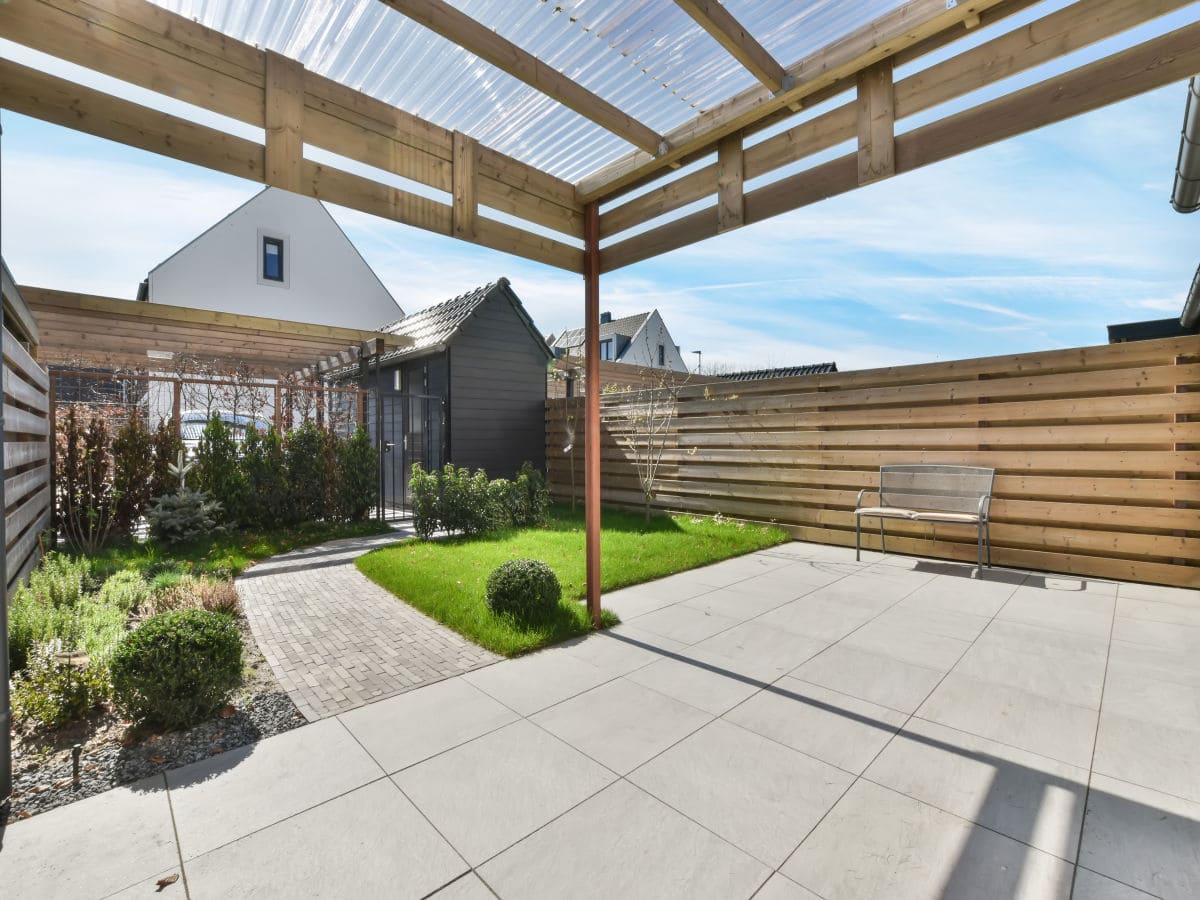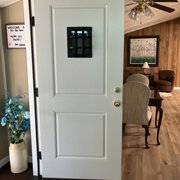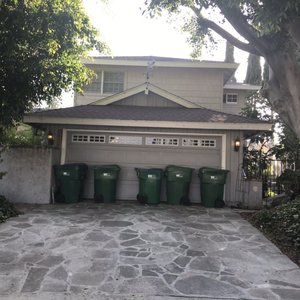In their simplest form, outdoor areas with patio covers are architectural structures designed to provide shelter and shade. These versatile additions to residential properties can transform an ordinary open space into a cozy and functional extension of the home.
Whether it’s a sunny day or a drizzle, patio covers offer protection from the elements, allowing homeowners to enjoy their outdoor spaces year-round. From intimate family gatherings to leisurely afternoons with a good book, patio covers create inviting outdoor environments that enhance the overall quality of life.
Outdoor spaces hold a unique significance in our lives, offering a natural escape from the hustle and bustle of daily routines. They serve as sanctuaries of relaxation, where we can unwind, connect with nature, or entertain guests. Beyond that, these spaces encourage a healthier lifestyle by promoting outdoor activities and fresh air.
By recognizing the importance of outdoor area with patio covers, homeowners can make the most of their properties, enjoying the benefits of a well-designed, comfortable, and inviting outdoor oasis.
Types of Patio Covers
Solid Patio Covers
Solid patio covers, also known as roofed or insulated ones, are architectural structures characterized by a solid, non-permeable roof. These covers are typically constructed using wood, aluminum, or vinyl, providing a completely shaded and weather-resistant space. Solid patio covers are designed to offer maximum protection, making them an ideal choice for areas with extreme sun exposure or frequent rain.
Benefits of Solid Patio Covers
Shade and Sun Protection: Solid patio covers offer uninterrupted shade, shielding occupants from the sun’s harsh rays. This shade keeps the space cooler and protects against UV radiation.
Weather Protection: With a solid roof, these patio covers provide reliable protection against rain, snow, and hail, allowing homeowners to use their outdoor spaces even during inclement weather.
Durability: Solid patio covers are built to withstand the test of time. The materials used, such as aluminum or vinyl, are resistant to rot, rust, and deterioration, ensuring a long-lasting structure.
Versatility: They can be customized with various design elements, such as lighting fixtures, ceiling fans, or skylights, enhancing aesthetics and functionality.
Real-life Examples of Solid Patio Covers
To illustrate the concept, showcase images of real solid patio covers in different architectural styles. Provide captions highlighting homeowners’ key features and design choices to create attractive and functional outdoor spaces using solid patio covers. These images will inspire your readers, helping them envision the possibilities of transforming their outdoor areas.
Lattice Patio Covers
Lattice patio covers are distinctive for their semi-open design, featuring a framework of intersecting slats or beams that create a lattice-like pattern. Unlike solid patio covers, lattice covers allow filtered sunlight to penetrate the space beneath, balancing shade and sunlight. Lattice covers are often constructed using wood or aluminum, allowing various design options.
Benefits of Lattice Patio Covers
Dappled Sunlight: One of the primary advantages of lattice patio covers is their ability to create a pleasant play of dappled sunlight and shade. This filtered sunlight can enhance the ambiance of the outdoor area, making it an ideal spot for plants or enjoying a sunny day without excessive heat.
Aesthetic Appeal: Lattice covers add a touch of elegance and sophistication to outdoor spaces. Their intricate patterns and architectural charm can complement various home styles, enhancing the property’s overall aesthetics.
Ventilation: Lattice covers promote natural airflow, making them suitable for hot climates. This ventilation helps keep the area underneath cooler, even on warm days.
Customization: Homeowners can customize lattice covers with climbing vines, hanging plants, or outdoor lighting to create a personalized and inviting outdoor environment.
Real-life Examples of Lattice Patio Covers
Showcase images depicting lattice patio covers in different settings and designs. These images should highlight the lattice pattern, the interplay of light and shadow, and the creative ways homeowners have decorated and utilized their lattice-covered outdoor spaces. Captions can provide insights into each example’s unique features, inspiring your readers for their lattice patio cover projects.
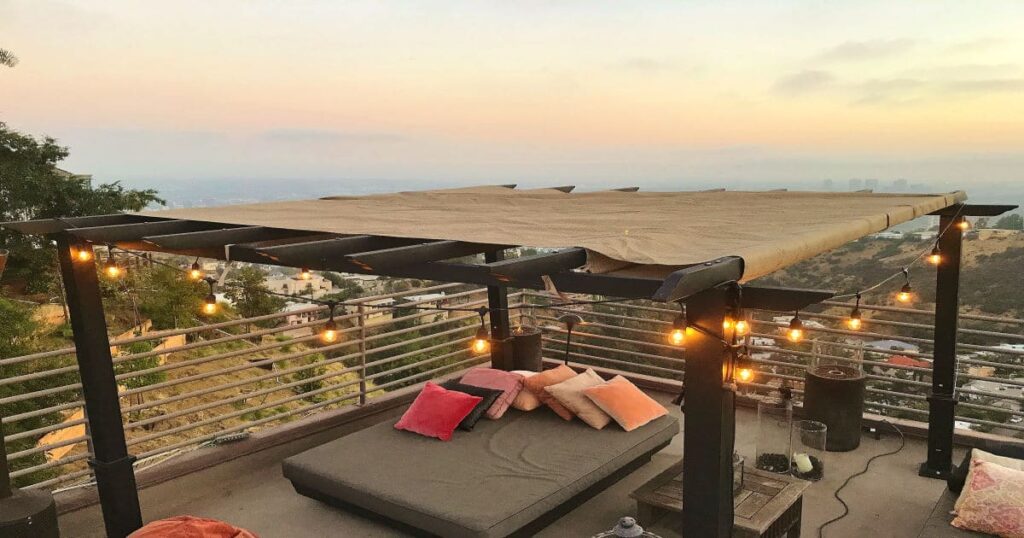
Materials for Patio Covers
Wood
Pros and Cons of Using Wood for Patio Covers
Wood’s natural aesthetic is one of its primary advantages, as it blends with various architectural styles and outdoor settings. Its warmth and texture create an inviting ambiance that many homeowners find appealing. Additionally, wood is recyclable, making it an eco-friendly choice for those concerned about sustainability.
However, there are some considerations to keep in mind. Wood patio covers may require regular maintenance, such as staining or sealing, to protect against weathering, rot, and insect infestations. Furthermore, wood’s initial cost can be higher than other materials, and the lifespan may vary depending on the wood species used. While cedar and redwood naturally resist decay, other woods may require more diligent care.
Wood Maintenance Requirements
Staining or Sealing: Applying a protective finish every few years helps prevent water damage and UV exposure.
Inspecting for Rot: Regularly check for rot or insect damage signs and promptly address any issues.
Cleaning: Remove debris and mold with regular cleaning using mild soap and water.
Pruning Plants: If vines or climbing plants are part of the design, keep them well-trimmed to prevent them from damaging the wood structure.
Aluminum
Advantages of Aluminum as a Material
Aluminum offers several key benefits, making it an attractive option for patio covers. Firstly, it is exceptionally lightweight, making it easy to work with during installation while reducing the structural load on the house.
This lightweight nature also allows for creative and versatile design options. Additionally, aluminum is inherently resistant to rust and corrosion, making it ideal for outdoor applications where exposure to moisture and changing weather conditions is common.
Unlike wood, aluminum patio covers do not warp, crack, or rot, ensuring longevity. Moreover, aluminum is a recyclable material, aligning with eco-conscious choices for sustainable construction.
Durability and Low Maintenance
Aluminum’s durability is a standout feature for patio covers. It can withstand the elements without deteriorating, ensuring it remains in excellent condition for many years.
Its resistance to rust and corrosion means that homeowners don’t need to worry about applying protective coatings or treatments. Unlike wood, which requires regular staining or sealing, aluminum patio covers demand minimal maintenance.
Occasional cleaning to remove dirt and debris is typically all needed to keep them pristine. This durability and low maintenance aspect of aluminum make it a cost-effective and hassle-free choice for those seeking a long-lasting and functional patio cover solution.
Vinyl
Vinyl patio covers are known for their synthetic, weather-resistant material, which offers several distinctive features. Firstly, vinyl is impervious to moisture, making it highly resistant to rot, corrosion, and termites, a common issue with wood patio covers.
This makes vinyl an excellent choice for areas with high humidity or heavy rainfall. Additionally, vinyl is exceptionally low maintenance, requiring little more than occasional cleaning to keep it looking pristine. It doesn’t require staining, sealing, or painting, as the color is integrated into the material during manufacturing. Furthermore, vinyl patio covers are available in various styles and colors.
Why Vinyl is Gaining Popularity
Vinyl patio covers have seen a surge in popularity for several reasons. Firstly, their low maintenance requirements are a major draw for homeowners with busy lifestyles who seek functional outdoor spaces without the hassle of constant upkeep.
Vinyl’s durability and resistance to the elements make it a reliable choice for long-term use. Additionally, vinyl patio covers often come with competitive pricing compared to other materials, making them an attractive option for those on a budget.
The versatility of vinyl, with various design options available, appeals to homeowners who want to create a personalized and aesthetically pleasing outdoor environment. Overall, the combination of durability, low maintenance, affordability, and customization options has contributed to the growing popularity of vinyl patio covers.
Fabric
Fabric patio covers, often made from materials like canvas or polyester, provide a lightweight and adaptable solution for shading outdoor spaces. Their primary advantage lies in their versatility. Fabric covers can be easily installed as retractable awnings, canopies, or pergola covers, allowing homeowners to adjust the level of shade as needed.
They create a welcoming and open-air atmosphere while protecting from the sun’s rays. Additionally, fabric covers come in a wide range of colors and patterns, offering ample opportunities for customization to match the outdoor aesthetic. Their flexibility and ease of installation make them the best choice for those seeking a practical and cost-effective solution.
Occasional Replacement Due to Wear and Tear
Despite their versatility, fabric patio covers do have some drawbacks. Over time, exposure to the elements and UV radiation can lead to wear and tear. Fabric materials may fade, become susceptible to mildew or mold, and weaken.
To maintain their appearance and functionality, fabric covers require regular cleaning and occasional treatments with UV-resistant coatings. Additionally, homeowners should be prepared for the eventual need for replacement due to the natural degradation of fabric materials. The frequency of replacement can vary. While fabric patio covers offer flexibility and style, homeowners need to factor in the cost of occasional replacement when considering this option.
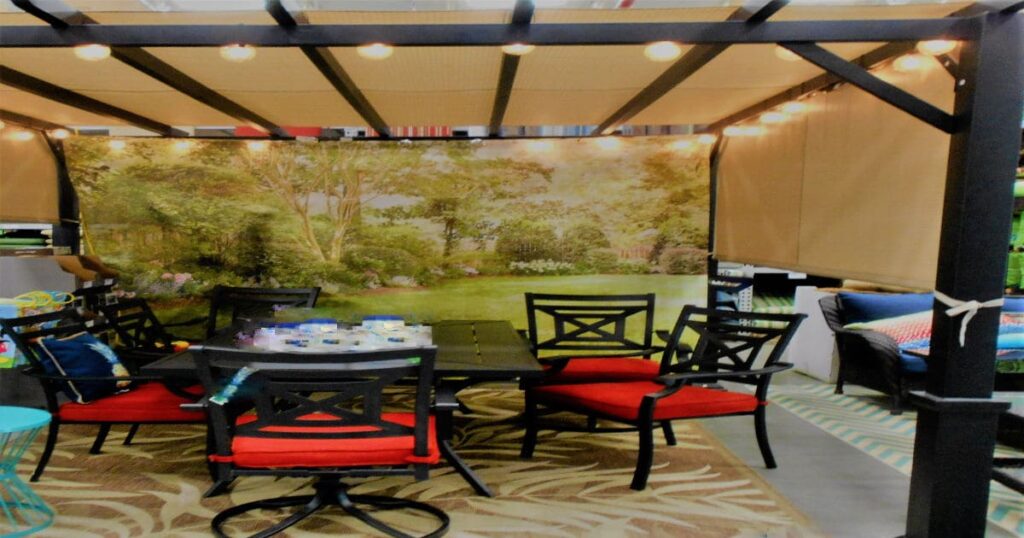
Design Considerations
Aesthetics
Patio covers play a pivotal role in enhancing the aesthetic appeal of outdoor spaces by seamlessly integrating with the property’s overall design. When thoughtfully designed, these covers can complement the home’s architectural style, whether modern, traditional, or eclectic. Choosing the right style is key to achieving this synergy.
For instance, wooden patio covers with natural finishes for a rustic home can enhance the cozy and inviting atmosphere. Conversely, sleek and minimalist aluminum or fabric covers might be a better fit for contemporary residences, adding a touch of elegance.
To further enhance aesthetics, consider incorporating decorative columns, lighting fixtures, or climbing plants, which can transform a patio cover into a visually appealing centerpiece of the outdoor area.
Size and Placement
When determining the appropriate size and location for a patio cover, assess your specific needs and the available outdoor space. Consider the intended use of the covered area, whether for dining, lounging, or other activities.
Measure the dimensions of the outdoor space to determine the size of the patio cover required, ensuring it accommodates your needs without overcrowding the area. As for location, it’s important to create a natural flow from indoor living spaces, making the patio cover easily accessible and convenient. Consider factors like existing architectural features, such as doors and windows, which can influence placement.
Consider local climate conditions; in hot summers, positioning the patio cover to provide shade during the hottest parts of the day enhances comfort. An ideal orientation can optimize shade and overall usability, ensuring your patio cover transforms the outdoor space into a functional and comfortable home extension.
Benefits of Patio Covers
Shade and Comfort
Patio covers offer a respite from the scorching sun, providing a shaded area where you can comfortably relax, dine, or entertain guests. Their shade shields you from the harsh rays and creates a cooler microclimate, allowing you to enjoy your outdoor space even during the hottest days. This escape from the elements enhances your outdoor experience, making it more enjoyable and conducive to various activities.
Protection from the Elements
Patio covers act as a protective barrier, safeguarding your outdoor furniture, grill, and other belongings from rain, snow, hail, and UV radiation. They help extend the lifespan of outdoor furnishings and prevent weather-related wear and tear, saving you maintenance and replacement costs in the long run. Additionally, during unexpected weather events, like sudden rain showers, having a covered outdoor space allows you to enjoy the outdoors without interruption.
Increased Property Value
Investing in a well-designed patio cover can add significant value to your property. Homebuyers often view covered outdoor spaces as attractive, particularly in regions with diverse weather conditions. A thoughtfully constructed and aesthetically pleasing patio cover can make your property stand out in the real estate market, potentially increasing its resale value. It also expands the usable square footage of your home, providing a compelling selling point.
Extended Outdoor Living Space
Patio covers effectively extend your living space outdoors, creating a versatile area for various activities. Whether it’s a cozy spot for morning coffee, an alfresco dining area, or a place to host gatherings with friends and family, these covers allow you to make the most of your property. They encourage outdoor living year-round, providing a seamless transition between the indoors and outdoors, which promotes a healthier and more enjoyable lifestyle.
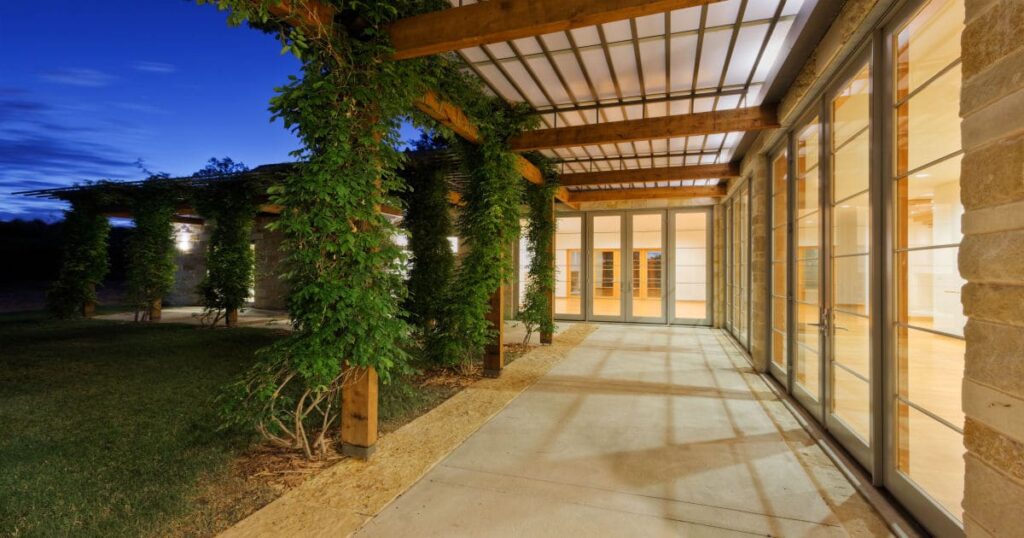
Maintenance and Care
Tips for Maintaining the Patio Cover Material
Maintaining the material of your patio cover is essential to ensure its longevity and functionality. For wood patio covers, consider re-staining or sealing every few years to protect against weathering, rot, and insects.
Inspect the wood for wear and address any issues promptly. Aluminum and vinyl patio covers are relatively low-maintenance but benefit from periodic cleaning with mild soap and water to remove dirt and grime.
Check for any loose components or fasteners and tighten them as needed. Fabric patio covers should be cleaned regularly to prevent mold growth, and you can apply UV-resistant treatments to prolong their lifespan. Regardless of the material, follow manufacturer guidelines for maintenance and consult with professionals if you notice any significant damage or structural issues.
Seasonal Cleaning and Inspection
To keep your patio cover in top condition, it’s advisable to establish a routine for seasonal cleaning and inspection. Before each new season, remove debris such as leaves, branches, and dirt that may have accumulated on the cover.
This prevents clogs and potential damage. Inspect the structural elements, including support posts, beams, and rafters, for signs of wear, rust, or corrosion, particularly after harsh weather conditions. For fabric covers, check for tears or loose seams that may need repairing.
After the rainy season, inspect for water pooling on the cover, as this can strain the structure over time. Regularly clean fabric covers to prevent mold or mildew growth. Overall, seasonal maintenance and inspection are key to preserving the condition and safety of your patio cover.
Budget Considerations
Cost Factors Associated with Patio Covers
The cost of installing a patio cover can vary. Solid materials like wood or aluminum are more expensive than fabric or lattice options. Custom designs or intricate features such as lighting, fans, or decorative elements can increase costs.
Labor costs for professional installation should be factored in. Location can also play a role, as local labor and material prices differ. Finally, permit fees and adherence to local building codes may incur additional expenses.
Offer Tips for Budget-Conscious Options
For budget-conscious individuals, there are several strategies to manage the cost of a patio cover project. One approach is to choose more cost-effective materials like vinyl or fabric, which can provide durability and aesthetics at a lower price point.
Standard or pre-designed patio cover kits are often less expensive than custom-built options. Consider a simpler design without complex features to reduce labor and material costs. If you have the necessary skills.
Periodically checking for local incentives or rebates related to outdoor improvements, such as energy-efficient designs, can help offset costs. Lastly, compare quotes from multiple contractors or suppliers to ensure competitive pricing for your patio cover project.
Embracing Outdoor Bliss: The Transformative Power of Patio Covers
Patio covers represent a remarkable marriage of form and function, transforming ordinary outdoor spaces into vibrant, usable extensions of our homes. As we’ve explored the benefits of patio covers, from providing shade and protection to enhancing property value and extending our outdoor living space, it’s clear that these structures have a profound impact on the way we live and interact with our environments.
Whether you choose the timeless charm of wood, aluminum’s durability, vinyl’s low maintenance, or fabric’s versatility, the key to a successful patio cover project lies in thoughtful design, proper maintenance, and budget-conscious decisions. With the right patio cover, you can create a haven where relaxation, entertainment, and the beauty of the outdoors converge, enriching your lifestyle and creating lasting memories.
So, embrace the outdoors and embark on a transformation journey, where your patio cover becomes the tapestry that weaves together your outdoor dreams with the practicality of everyday living.
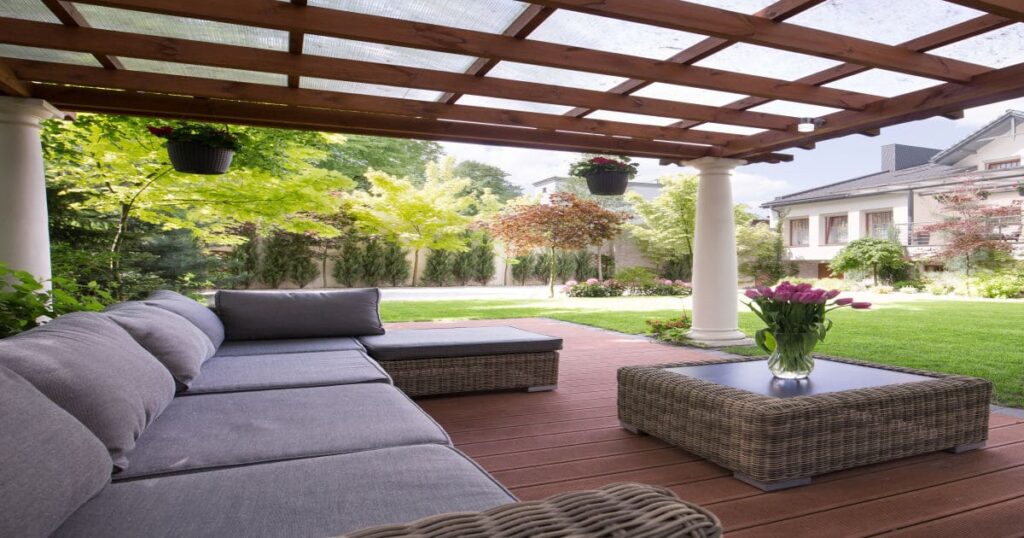
Frequently Asked Questions
Will a Patio Cover Increase the Value of My Property?
A well-designed and attractive patio cover can increase your property’s value. Homebuyers often see covered outdoor spaces as desirable features. Additionally, patio covers expand your usable living space, which can be a compelling selling point.
Can I Customize My Patio Cover?
Yes, patio covers are highly customizable. Choose from options to match your aesthetic preferences and outdoor needs. You can also incorporate features like lighting, fans, or decorative elements to personalize your design.
What is the Lifespan of a Patio Cover?
The lifespan of a patio cover depends on the material and maintenance. Wood patio covers can last 10-15 years or more with proper care, while aluminum and vinyl covers often have longer lifespans due to their durability. Fabric covers may need occasional replacement due to wear and tear.

